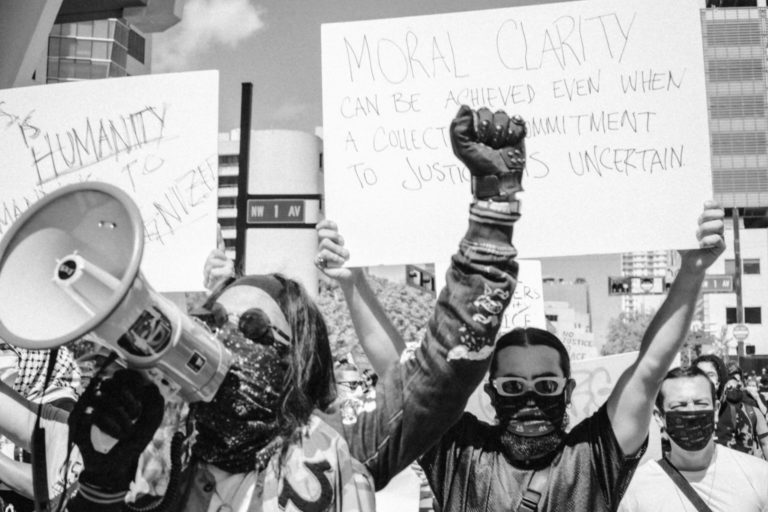
 Arjen Barel
Arjen Barel
Storytelling is hip and happening and its usefulness is slowly making its way into government policy-making, especially as a means of increasing citizen participation. This is necessary, as citizens are becoming more vocal and have more means at their disposal to communicate and mobilise. In this sense, social media have influenced the dynamics of policy and political decision-making.
In order to anticipate this, governments, at all levels, are increasingly active in discussions with the city, the neighbourhood and the district. A good thing because, in theory, it gives residents more influence on the direction of policy. In theory, because other interests also play a role; economic and geographical developments must continue to be taken into account and mobility, prompted by a growing population and the need for suitable housing, is a given. But a listening government can certainly lead to a smoother – and perhaps less radical – change in the living environment and a development in which everyone feels heard and involved.
Tanja Jadnanansing, district chairman of Amsterdam Zuidoost, therefore states in the Parool of 14 July 2020 about the future developments in her district: ‘In the past it was often about the residents, now it must happen with the residents’. That much is clear, but how do you do that properly?
The first inclination is to organise participation evenings. Of course this is a good way to measure the temperature, but there are snags. First of all, you only reach a limited part of the population, the people who are prepared to sacrifice an evening to talk to politicians. These are usually the familiar faces, sometimes activists and always well read and informed. They may attract a few sympathisers to such a meeting, but you will not reach the entire population. Moreover, it is a construction of pro and con. A meeting does not benefit from nuance. A position is taken and it is important to present it as strongly as possible. In this respect, a game is often played in which various fixed roles are assumed. I experienced this myself once during a consultation on a festival I organised on the shores of a lake. I spoke to the action group for keeping the banks green, who told me: ‘How nice that the festival is coming back. Of course we objected, because we want to keep sending out a signal. But we’ll be sure to drop by! The roles were fixed, certainly as long as you did not look any further.
It is therefore important to break this system and to look for the real stories behind the opinions and views. Only in this way is it possible to bring true motives to the surface and act on them respectfully in policy-making. This requires that the art of open and appreciative listening once again takes centre stage in policy-making, both in times of relative calm and in times of urgent crisis. In this respect, we can take a leaf out of Atlanta mayor Keisha Lance Bottoms’ book, who at the height of the Black Lives Matter protests in her city declared to the cameras of CNN: ‘all we have to do right now is listen’.
This is not easy. Besides the fact that people do not always master the art of listening, collecting stories takes time; a lot of time. A story is not shared just like that, it requires the building of trust and the knowledge to get people into a storytelling mode. In this it is important to steer as little as possible, because any influence damages the necessary veracity.
In that light, it is difficult for any government to do this work itself. The moment someone enters a living environment saying: ‘I work for the municipality,’ the dynamic changes and each shared story will take on a direction. Collecting stories can therefore only be done by people who have no vested interest and who are prepared to listen without judgement.
But that is only the first step. Because in order to extract the essence, or perhaps essences, from a large collection of stories, an objective analysis of what lies before us is required. Almost two years ago, we experimented with this in cooperation with the Hogeschool van Amsterdam, which used stories as research material. In this case, to find out what needs young people had when coming of age. A different subject, but the same method of listening to and coding stories. The results were noteworthy. The researchers stated that the information they got from the stories was much richer than from other research methods and therefore gave a much better insight. We can build on the results of this project when it comes to analysing stories.
This is no quick fix, but it can lead to very useful and usable results, which can be put to good use when defining policy together with citizens.
There is still a catch. Sharing stories takes place in a mental environment in which freedom and imagination predominate. Governments sometimes see this as a threat. After all, the process of working with stories is one of letting go and therefore much less controllable than many other policy processes. As it were, you put your fate partly in the hands of others. The wish is expressed, as the quote from Tanja Jadnanansing shows, but is the will really there? After all, control is an instrument on which the government – and not only the government – partly relies and daring to give it up is one of the most difficult things there is.
It is gratifying to see that the aforementioned district council of Amsterdam Zuidoost has dared to decide to use stories as a basis for policy development. To this end, they have engaged us and we are currently listening and recording stories with a group of committed creatives, many of them from this part of the city. In the near future, the analysis of the first output will start and then the big research will start on the amount of information that can be distilled from the stories and their actual usefulness in influencing policy making. In the light of previous projects, our experience in working with narratives and the toolbox we have developed on the basis of it, we are very expectant and can hardly wait to see and share the results.
Benieuwd hoe wij onze storytelling-methode inzetten in conflictgebieden of ter bevordering van sociale cohesie in de conflictgebieden? Neem contact op.